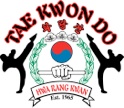Hwa Rang Kwan Napa
A nonprofit martial arts program in Taekwondo, Hapkido and Kumdo


History of Hwarang
The Meaning
“Hwarang” is most often translated as “Flower Youths” or “Flower Knights”. Therefore, the name Hwa Rang Kwan literally translates to “The School of Flowering Youth” or “The School of Flowering Knights”, which is named after the one of the most famed warriors of ancient Korea, the Hwarang.
The Hwarang
The Hwarang are said to have been an elite group of male youth in Silla dynasty, an ancient Korean kingdom that lasted until the tenth century. The time of their appearance dates back to the sixth century during the Three Kingdoms period.
The Hwarang, who were young sons of noblemen, had studied literature, music, dance, Chinese medicine, along with armed and unarmed combat to develop themselves both mentally and physically.
In addition to their studies, they were open minded individuals of both Buddhism and Confucianism, which enlightened the warriors to strengthen and purify their inner energies, or ki.
By doing so, it empowered them to reach greater spiritual heights when entering combat. Combined with their hard work and discipline, they were able to become well renounced warriors despite their youth.
The Hwarang are said to have fought diligently with honor and prestige, which allowed them to become the main force in the unification of the three kingdoms of Korea.
Additionally, the Taekwondo sequence “Hwa-Rang” and numerous traditional forms are named in honor of the Hwarang.
Copyright © 2013 Hwa Rang Kwan Napa, All Rights Reserved